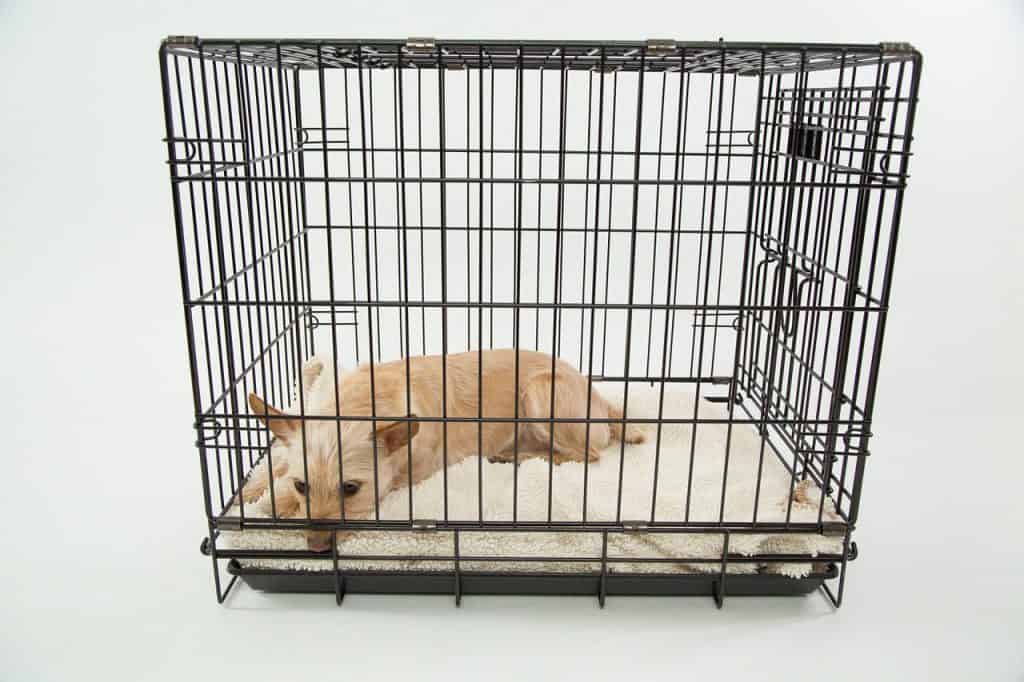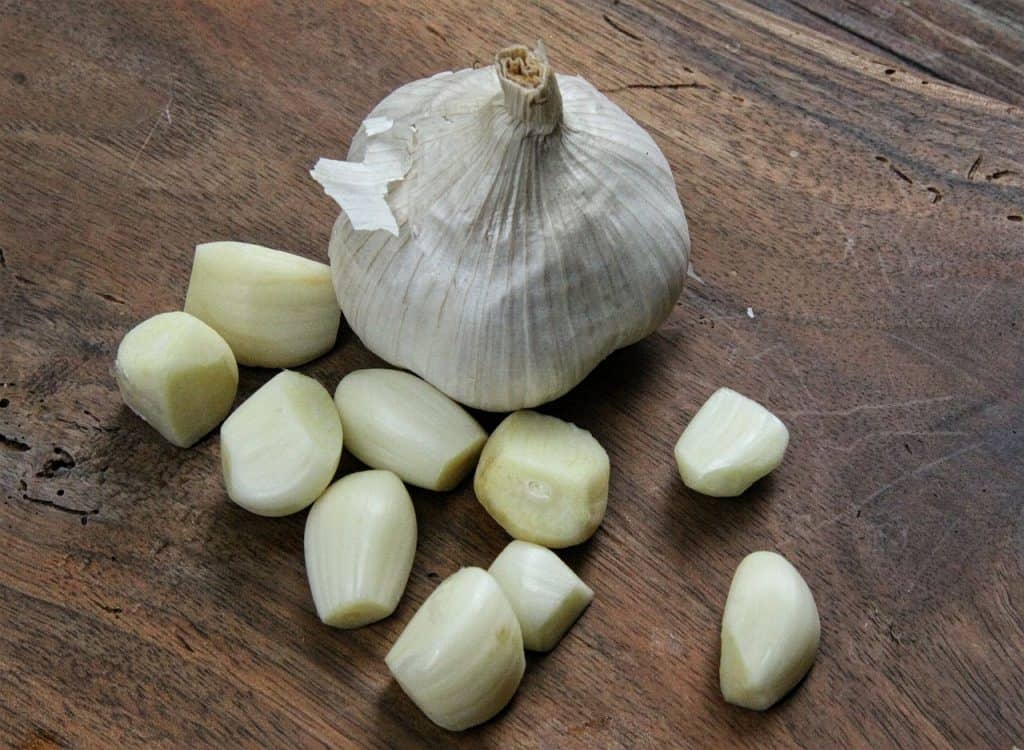
What Everyone Outta Know About Home Remedies for Ear Mites in Dogs
When your precious canine has an ailment such as ear mites, many times harsh chemicals or injections are used to relieve them of their symptoms. However, there are several home remedies for ear mites in dogs that are easy, natural, and require a few basic things most people already have in their household. If you are looking for low-cost, natural yet highly effective treatments, we are here to help. We have gathered all the best-kept secrets and discovered which home remedies are not only successful but are also backed up with veterinary approval.
How Do Dogs Get Ear Mites?
When it comes to the cause of ear mites, you should know exactly what they are. Ear mites live and thrive in dog’s ears while being microscopic parasites that feed off dead skin cells with just one cell; though there may seem like many different species these specific ones causing problems for our pets today include Otodectes Cynotis which can be seen mostly among domesticated animals such as dogs or cattle The smallest possible viewing size would have 8 legs – so tiny we cannot see them without a microscope!
Ear mites are a pesky problem for both humans and animals alike. The main cause of the ear-mite infestation in dogs, as with many other species on earth (and probably beyond), is providing them too much “comfortable housing”–the kind where they can easily take up residence due largely to contact through their fur or bedding material rather than direct transfer like Illegally Grazing Sheep Do When You’re Not Looking!). Dogs also get caught when trading moments between pets who have been infected before; this leads to not only harmful but potentially fatal diseases such as sulfate eye irritation. While it is extremely rare for humans to contract ear mites, they can spread them, so be wary when you are handling infected animals and thoroughly wash your hands and change your clothes before coming into contact with animals that are free from ear mites. There is an even higher risk of spreading ear mites if you have cats, as ear mites are seen more often in cats (most especially in outdoor cats), or if you have multiple pets. Once again, this is because ear mites are highly contagious for animals and easily spread through physical contact, even if the contact is brief.
Life Cycle of Ear Mites
It is important to know the life cycle of ear mites to ensure proper treatment. Ear mites will lay their eggs and once they have been laid, they will hatch after incubating for four days. Once the larvae emerge, they will feed on the ear wax, dead skin cells, and skin oils of the host animal. The larvae will feed for approximately one week. After the week of feeding, the larvae will molt and become what is called a protonymph. A second molt will occur in just a few more days, turning the mite into a deutonymph. Even though this is an adolescent state for the ear mite, the gender is still yet to be established. The mites that are in the deutonymph stage will begin to mate with male ear mites. Once the mating has been completed, a third and final molt will occur. It is during this molting that the mite will become either female or male. After the gender has been established the adult mites will continue with the breeding process. Female ear mites will already be prepared to lay eggs, and adult male ear mites will continue to search for deutonymphs to mate with. The life span of an adult ear mite can last up to two months.
Signs and Symptoms that a Dog Has Ear Mites
When your dog contracts ear mites, it will make your dog very uncomfortable due to the extreme itchiness and pain caused by the presence of the mites. Looking into your dog’s ears or observing their behavior are both ways you can recognize if your dog has been infected with ear mites. Several symptoms occur when your dog is suffering from the widely known irritable ear mites. Signs and symptoms that your dog has caught ear mites include:
- Excessive scratching and rubbing of (usually) both ears
- An unusually amount of head shaking
- Black or brown waxy secretion
- Strong odor
- Inflammation
- Obstruction of the ear canal with coffee ground-like discharge
- Excessive pain when their ears are touched
- Redness inside the ear
- Debris that is a reddish-brown color
- Noticing that your dog is holding its head differently
- Ears that have become crusted and scabbed
- Increase in wax production
- Thick and crusty discharge
- Rubbing their face on the ground or furniture to get relief from itching
- Crying out in pain when scratching the ears or when they are touched
Although the ear mites are barely visible to the human eye, you will be able to spot them within the debris in the ear. Ear mites will be white specks among the dark, reddish-brown debris. The dog’s ear canals are tiny, but even with a magnifying glass, you might not be able to see anything. If your pup has been showing other signs of discomfort and there is no visible evidence left behind by the pests themselves then it could mean they’ve traveled deeper into their brain where we cannot reach them without performing a surgery-like procedure on ourselves! It is also recommended to take your dog to the vet if you cannot spot the ear mites yourself. The vet will look into your dog’s ears with a medical instrument called an otoscope to get a magnified image of the inside of the ear of the dog. From there, the vet can confirm and diagnose your dog with ear mites.
Even though ear mites are a common occurrence, an ear mite infection can lead to very serious complications. If you do not act quickly to remove ear mites and the infestation is left untreated, ear mites can cause permanent damage to your dog’s ear canal and hearing. The excessive scratching caused by the mites can lead to the rupture of the blood vessels inside the ear flap. The ear flap will then become very swollen and extremely painful for your dog and unfortunately will require surgery to fix. When this occurs, it is called an aural hematoma and it is a dangerous condition for a dog to develop as it can cause permanent damage and even deafness. Many cases of dogs losing their hearing are due to ear mites being left untreated. In addition to potentially causing ruptured blood vessels, ear mites can cause skin conditions in your dog. Diseases of the skin caused by ear mites will affect the tail and the neck of the dog. All things considered, ear mites are quite common among dogs and can affect dogs of any age, and any breed, so it is ideal to check your dog’s ears often.
Home Remedies for Ear Mites in Dogs

There are several natural ways to relieve your dog of ear mite symptoms as well as stop the infestation altogether. The following treatments are all-natural and can be done from your home with little effort. Many of the ingredients used for treating ear mites through home remedies are items you most likely already have, and if you do not have them in your pantry, the ingredients will be inexpensive to purchase. Before deciding upon harsh chemicals or injections that are available on the market, you can try one of the many different holistic cures listed below.
No matter which treatment you decide to administer to your dog, there are a few things you will need to do before you begin any treatment. The first step before beginning home remedies is to assemble the proper tools and equipment. Items you will need to use for most home remedies are:
• An eyedropper
• Ear dropper
• Cotton balls
• Cotton swabs
• A bulb syringe
• Small bowl or dish
• Tissues (to wipe excess debris or waxy build-up)
The second step before using any home remedies would be to cleanse your dog’s ears gently and thoroughly, taking extra care to remove as much of the reddish-brown debris and waxy build-up in the ears as possible. This will make sure that the ear mites and eggs will not have anywhere to hide and the treatment will be able to reach them. If the dog’s ears are not cleansed before treatments, it can stop the treatment from working properly and this will cause longer treatment periods.
Home Remedies for Treating Ear Mites in Dogs
1. Corn Oil

Take an eyedropper and using a few drops of corn oil, (such as a brand like Wesson), place the drops into your dog’s ear. Once the drops are inside, gently massage the inside of the ear to ensure that no part of the ear is left untouched by the corn oil. Make sure to use an ear swab or cotton ball for sterility and gentleness. You will need to repeat this process once per day, for a minimum of ten days, depending on how severe the infestation is. The corn oil will drown the ear mites and heal the inflamed skin in the ear. Corn oil will act in three different ways: soothing the skin, smothering the ear mites, and speeding up the healing process. Corn oil is one of the top ways to heal ear mites from home as it is highly effective.
2. White Vinegar
The acidity in the white vinegar will help remove dirt and debris left behind from the ear mites, as well as maintain a healthy equilibrium in the ears. Any adolescent or adult ear mites will be killed once they come in contact with the vinegar. Measure a small amount of white vinegar, approximately one tablespoon, and dilute in a bowl with warm water. The combination should be one part vinegar to two parts water.
Once you have diluted the vinegar, gently pour the mixture into the ear and massage thoroughly. After you are sure each part of the ear has been in contact with the diluted white vinegar, finish the process by gently wiping the inside of the ear with a cotton ball. You will need to repeat this remedy daily for at least one week.
Note: It is highly important to understand that this remedy is not ideal for use on pets that have sores or intense irritation inside the ears. The vinegar will cause an uncomfortable stinging on contact and will cause your dog pain.
3. Almond Oil with Vitamin E
Make a solution by combining ½ an ounce of almond oil and 400 IU of vitamin E. Warm this mixture to body temperature and apply half an eyedropper to each ear. When you put the drops inside the ears, massage the mixture around inside the ear with a cotton ball. Remove any excess mixture and debris with a clean cotton ball or cotton swab.
You will need to apply the almond oil and vitamin E solution every other day for six days, and for the next three days after the treatment, do not apply the solution. Monitor your dog’s ears and repeat the process for another six days. The combination of almond oil and vitamin E will kill the majority of present ear mites and moisturize, soothe, and heal the skin.
4. Yellow Dock Root Extract
To make this mixture, you will need nine drops of yellow dock root extract (which can be found at many health or organic food stores), and one tablespoon of warm water. Fill an eyedropper halfway with the mixture and put the full amount into the ear. Gently massage the ear before your dog has the chance to shake the solution out. This treatment will need to be continued once every other day or every three days, depending on the seriousness of the ear mites.
Because ear mite eggs can be quite resistant to home treatments, this particular treatment will need to be carried out for at least six weeks. It is important to have continuous treatment to prevent new hatchlings from reproducing until there are no more eggs left in the ears.
5. Psorinum or Sulfur
Although sulfur treatments can be odorous, they are highly effective in relieving your dog of symptoms caused by ear mites. Since ear mites cause extreme levels of irritation in the dog, you can relieve your pet of these symptoms by using sulfur as a natural treatment. Choosing to use psorinum or sulfur will reduce irritations caused by the ear mites and therefore prevent your dog from causing further damage by constantly scratching the ears.
Keep in mind using psorinum or sulfur will not cure your dog of ear mites, it will only provide relief from symptoms. In short, if you can prevent your dog from excessively scratching the ears, which can lead to permanent damage, you should consider using psorinum or sulfur to do so.
6. Mineral Oil
Using a mineral oil treatment will last for about one month, so it is ideal to start with 16 ounces of mineral oil to make sure you have enough for the duration of the treatment. Take an eye dropper and fill it halfway with mineral oil. You will then place the drops inside the dog’s ear and massage them at the base of the ear to ensure the drops will enter the ear canals. Second, you will need to soak a cotton ball with the mineral oil and use it to cleanse the inside of your dog’s ear flaps. Make sure you wipe the ear flaps thoroughly, yet gently to make sure the mineral oil is well distributed.
Mineral oil treatment is highly recommended as it will not provide the ear mites further nutrients to feed on and the oil will smother any adolescent or adult mites on contact. The course of this treatment is twice a week, in both ears, for a minimum of one month. This period of treatment will be long enough to kill existing ear mites and prevent further generations from forming.
A new study has shown that Otomax, a mineral oil-based otic cream can be effective against ear mites in cats and dogs. As part of this trial testing the efficacy (or lack thereof) for their product, they put 2ml worth into 30 seconds massaging at a base area near ears where it was applied with no positive results three weeks later compared to controls who had plenty by then too much because I’m sure you’ll agree if someone applies anything close enough there’s bound.
Although the study was done on cats, the same results can be found for dogs, as the treatment for ear mites for both species are the same. Mineral oil is one of the best treatments for ear mites in dogs, and cats, and if you have both of these animals for pets, using this home remedy will ensure a quick and effective recovery.
7. Cleaning Cages or Bedding

It is important to clean cages and bedding before, during, and after treating your dog for ear mites. Ear mites can lay their eggs just about anywhere and once they hatch they will search for the closest host. Even if it takes time to make contact with a host, the ear mites will continue to breed and lay eggs. Not only will bedding and cages provide a breeding ground for the ear mites, but also anytime your pet shakes its head or scratches the ears, skin flakes and crusts will fall from the ear. Many times these skin flakes and crusts will contain live ear mites and/or eggs and they will easily contaminate your dog’s living environment. You should also sterilize food dishes and water bowls for the same reason.
To properly cleanse your dog’s cage and/or bedding, you should do so outside or in an area that your dog will not be coming into contact with. First, you will need to shampoo or soap up the contaminated items. Leave the soap to soak in for about ten minutes before rinsing with hot water. After rinsing, leave out in the sun to dry. If the bedding is small enough to be placed into a dryer, you can do so on an extra hot cycle for about 30-40 minutes but make sure the bedding is the only item in the dryer during this time. The extreme heat will kill any remaining eggs or mites.
All in all, taking the extra step to clean your pet’s bedding, cages, and food and water bowls, will enable your pet to live in a clean environment as well as prevent re-infestation.
8. Frequently Bathing Your Dog

Ear mites can spread to other areas of your dog very quickly. You should make sure to bathe your dog as often as three times a week. It might seem quite excessive, yet the warm, wet environment will wash away any eggs and live ear mites living in your dog’s skin and hair. When you are shampooing your dog, pay special attention to the outside of the ears, the neck, and the tail. Let the shampoo soak for a few minutes before rinsing your dog. Rinse your dog with warm water to remove the shampoo. Once the shampoo is removed, take a mixture of warm water and about two tablespoons of yellow dock root extract (this will vary depending on the size of your dog), and use this as a final rinse.
The yellow dock root extract will kill any remaining mites on the skin. You will need to bathe your dog anywhere from twice to three times per week depending on the severity of the ear mites and you will need to bathe them throughout any treatment you are using. If you do not want to use a shampoo that is chemically based, natural shampoos containing Neem oil or extracts are a great skin soothing alternative.
9. Hydrogen Peroxide
Choosing to use hydrogen peroxide is an effective ear mite remedy, but should only be used on cooperative and calm dogs, because hydrogen peroxide can harm your dog’s eyes should it come into contact with them.
To be extra safe, do not use an eyedropper for this method. Instead, dab a cotton swab inside the bottle of hydrogen peroxide but make sure that it is not dripping before you apply it to your dog’s ears. You will then need to wipe the ear flaps taking care not to go too deep. It is best to use an upward motion when wiping your dog’s ears as it will prevent any debris from falling into the ear canal which can cause further blockage. Equally important, you will need to place your dog on its side to use this method of treatment. The hydrogen peroxide will loosen debris and/or blockage allowing for easier removal and cleaner ears.
10. Food-Grade Diatomaceous Earth
You will need to add a pinch of the food-grade diatomaceous earth to your dog’s ears once a day, every day for one month. You can mix the small amount of food-grade diatomaceous earth with a bit of warm water to be able to use a dropper for administering the treatment.
The food-grade diatomaceous earth will kill any current or newly hatched ear mites, but not the eggs. That is why it is important to continue this treatment for at least a month so you will break the breeding cycle and prevent new eggs from being laid. This home remedy should be used in the most severe and extreme cases.
Please note that it is extremely important that you DO NOT use the type of diatomaceous earth that is used for pool filtration.
11. Aloe Vera

The aloe vera plant and its natural healing properties have been used for centuries to soothe a sore throat and heal burns victims after an accident by keeping them hydrated with moisture-rich sap in their skin – now you can use this same gentle herb on your dog’s ear problems too!
The aloe vera plant is a great way to treat your dog’s ears. Break off an inch or so from one of the leaves and use that cotton swab you probably have sitting in some drawer somewhere, just like I do! It only takes about 10 seconds per day for optimal results which will come within 5-6 days after consistent usage (I’m not sure what would happen if we skipped any given time).
The inside lining where there’s been damage due to either drainage problems or infections etc., may be sensitive so make sure they’re clean first before applying gel onto them – no need to stress over anything here right?
12. Boracic Acid
This remedy can be found in several larger shopping centers, pharmacies, or health food stores and is known to be a very common treatment for ear mites. Boracic acid has strong antiseptic properties and can also be used for infections. To treat your dog for ear mites, dilute the boracic acid with water to wash and clean the inside of the dog’s ears.
The boracic acid will help restore the natural health of the dog’s ears by assisting in the healing of inflamed, scabbed, or sore skin. This solution can be used in addition to other home remedies and should be used on your dog once per day, for approximately two weeks, depending on the seriousness of the ear mites.
13. Honey

The antiseptic and antibacterial properties of this natural substance can provide an effective healing remedy for your dog. Any type of honey will do, but make sure the honey is not artificial or has added sugars. To begin mixing the remedy, you will need three teaspoons combined with three ounces of warm water. Next, you will need to stir the ingredients together until the honey has completely dissolved.
To administer to your dog’s ears, you will need the assistance of a bulb syringe so you can effectively squeeze the solution into the ears. It is important that the liquid covers the entire inside of the ear and you will need to hold the ear upright to ensure that the inner ear is also coated. Keep your dog’s head still for a minute or two so they cannot shake the honey mixture out of their ears. You can repeat this remedy every other day for at least one month.
14. Garlic and Olive Oil

An easy and quick home remedy will be to infuse crushed garlic in warm olive oil and let that sit, covered overnight. To make it, you will need five to seven cloves of fresh garlic and one tablespoon of olive oil, any type of olive oil will work. Peel and chop the garlic cloves finely, almost to a paste and add to a small bowl with the warmed olive oil. Let this sit for at least twelve hours. Once the mixture has had time to infuse, you will need to warm up the mixture again before you apply it to your dog’s ears. With the use of an eyedropper, add five drops of the mixture into each ear and gentle massage so the mixture will reach the inner canal.
Using this remedy will smother the ear mites and the garlic will provide antibacterial healing to the ear as well. You will need to give each of your dog’s ears five drops, once per day for a period of at least twenty-one days.
15. Baby Oil
The gentleness of the baby oil will moisturize and soothe your dog’s ears as well as smother any adult ear mites. You will need to place at least three drops into each ear and massage gently. Following the drops, take a cotton ball dipped in baby oil and wipe the inside of the ear flaps. You can do this daily for at least one month, or until the ear mites have ceased completely.
16. Hand Sanitizer
Using a hand pump sanitizer, administer one to two pumps of the sanitizer into the dog’s ears and massage. Within two days, you will notice your dog has stopped shaking its head or stopped scratching its ears. This remedy is ideal for dogs that have not already developed raw, sore, or open wounds in the ear as the alcohol in the hand sanitizer will cause a burning sensation.
Infographic
All in all, using these herbal remedies can be inexpensive and highly effective. No matter which home remedy you choose to use, soothing and healing your dog is a high priority so there is no permanent damage caused or the need arising for the dog to go through surgery. It is important to routinely cleanse the dog’s ears throughout treatment and even afterward to prevent the mites from coming back. Remember to check your dog’s ears daily during an infestation, as well as their bedding or cage to keep the mites from spreading or continuing longer than usual. Overall, natural remedies are a healthier alternative than the harsh chemicals and injections often used for stopping ear mites.
You may also like
Calendar
| M | T | W | T | F | S | S |
|---|---|---|---|---|---|---|
| 1 | 2 | |||||
| 3 | 4 | 5 | 6 | 7 | 8 | 9 |
| 10 | 11 | 12 | 13 | 14 | 15 | 16 |
| 17 | 18 | 19 | 20 | 21 | 22 | 23 |
| 24 | 25 | 26 | 27 | 28 | 29 | 30 |




Leave a Reply